A Writer’s Schedule (All Creatives Welcome)
I’m going to show you how to organize yourself in such a way that you can create a schedule that works for your life in totality.
Are you one of those people that prioritizes other people or work obligations to the point that there’s no time to get to your creative goals at the end of the day? That’s because having an intention is different than having a plan. If you need a plan, then this article is for you.
I’m not going to tell you what to do.
At least, not exactly.
I’m going to show you how to organize yourself in such a way that you can create a schedule that works for your life in totality.
When you accomplish your daily goals is up to you, but I’m going to show you how to get to a place where you can schedule in your writing time without having to sacrifice or sabotage those sacred hours.
This is the biggest step. Before you can plan out your creative to do list, you need a visual reference for everything you’re working on. This grid can include personal projects, projects you’ve been commissioned to do, and freelance work.
It will contain key information:
The type of project: Write whether it’s a Half-Hour Pilot, A feature screenplay, A Manuscript, A Short Film, etc.
The genre (if applicable): Is it a comedy, thriller, drama, YA?
The two categories above will help you analyze the diversity in your portfolio. Do you have everything a manager would ask for? Do you have scripts for every genre you’re interested in writing for? For non-writers, the same applies: does your portfolio reflect the kind of work you want to be hired for? This will help you decide what to work on next.
The purpose of the project: Sometimes you create things as a proof of concept. In writing, we call that a sample. Other times you write things with the goal to sell it commercially or publish it. It’s important to write down those goals. This will determine your level of urgency and help you prioritize.
The description or logline: Make it good, because as you start sending out projects or applying to fellowships, you’ll need a place that has all of your loglines or project descriptions in one place.
The status and deadlines: Is it completed or in progress? What are key milestones that need to be hit? When would you like to have those milestones completed?
The creative partners: Who else is attached to this project? For freelancers: who is the client?
HERE’S A LINK to the Project Grid Template I created.
Make a copy and make it your own. Note: All projects in the template are fake examples.
We can dive deeper into this at another time. What I’ll say for now, is that it may take some time to understand, realistically, how much time you need to complete a milestone or step. Give yourself grace as you learn yourself and your pacing.
Since each milestone now has a deadline, you should be able to look at your grid and know what step you should be working on for each project. Without having to search your brain, you have your weekly to do list.
I like writing down my weekly and daily goals. Nothing like using a paper and pen to check off a goal.
You’ll feel like a failure if you set lofty goals that don’t factor in your life or, for some, how you make your income. Writing 3,000 words on a day where you wake up early to meet your trainer, then go straight to work, then have family dinner, doesn’t seem reasonable. Maybe that’s a 200 words before bed kind of day.
These other responsibilities include: Volunteer commitments, work commitments/schedule, social commitments, personal or professional development, workouts, appointments, reading time.
Looking at the weekly to do list, I start to put each task on different days taking into account what else I have scheduled already. I write down everything and plan accordingly, so that my days feel like successes rather than failures.
As a writer or creative, you have to live life. It’s not good for our creativity or our wrists to be literally writing and creating all day. To have stories to tell and things to say, you need to experience the world. The key to setting a schedule is learning how to balance and factor in the other parts of your life.
But you can’t do that properly if you don’t understand the steps you need to take to get to completion.
Let me know in the comments if this framework helps you!



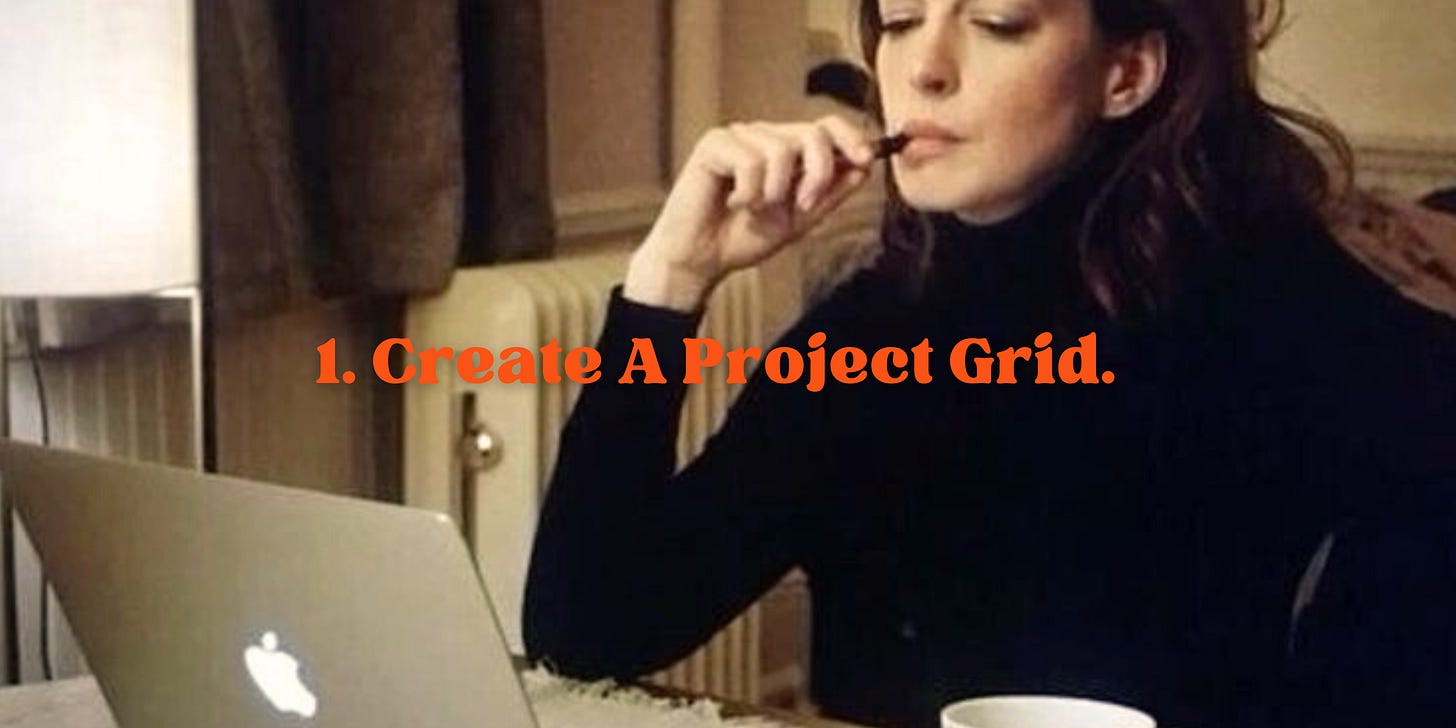
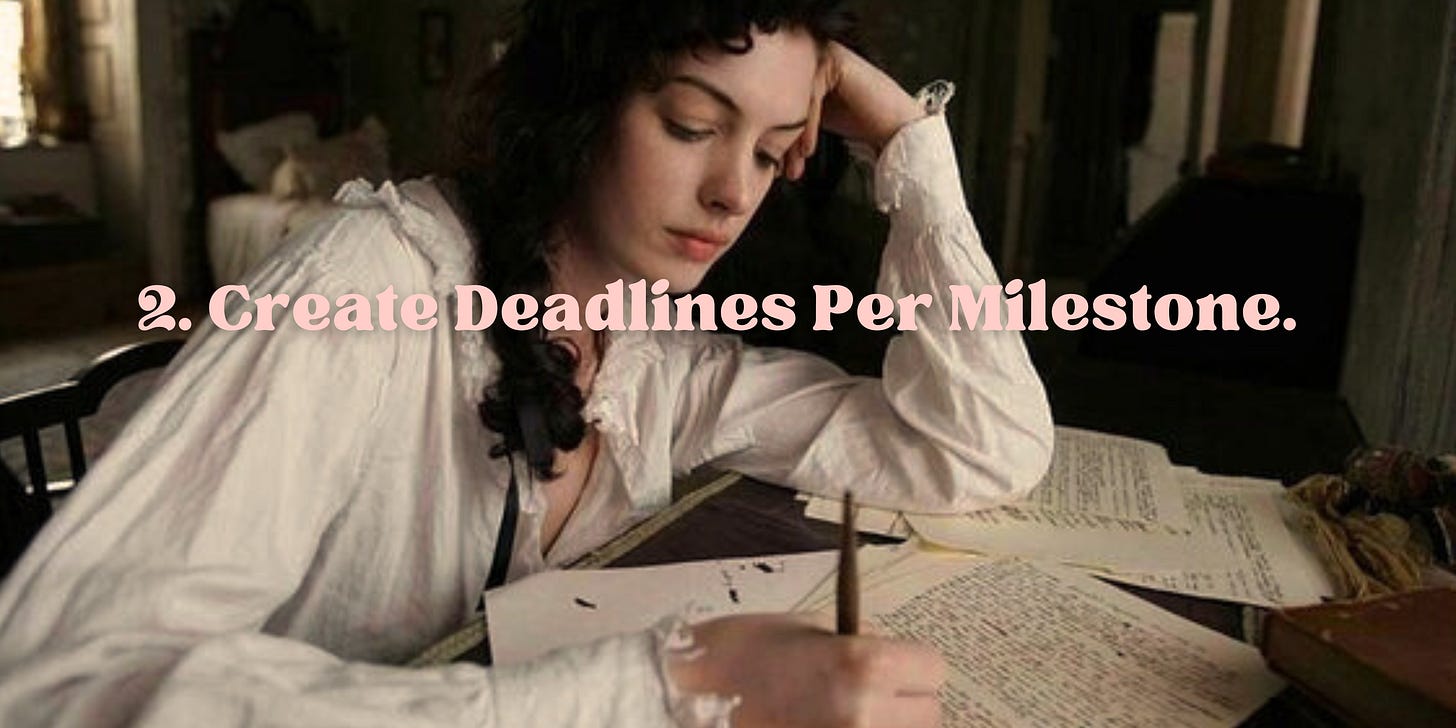
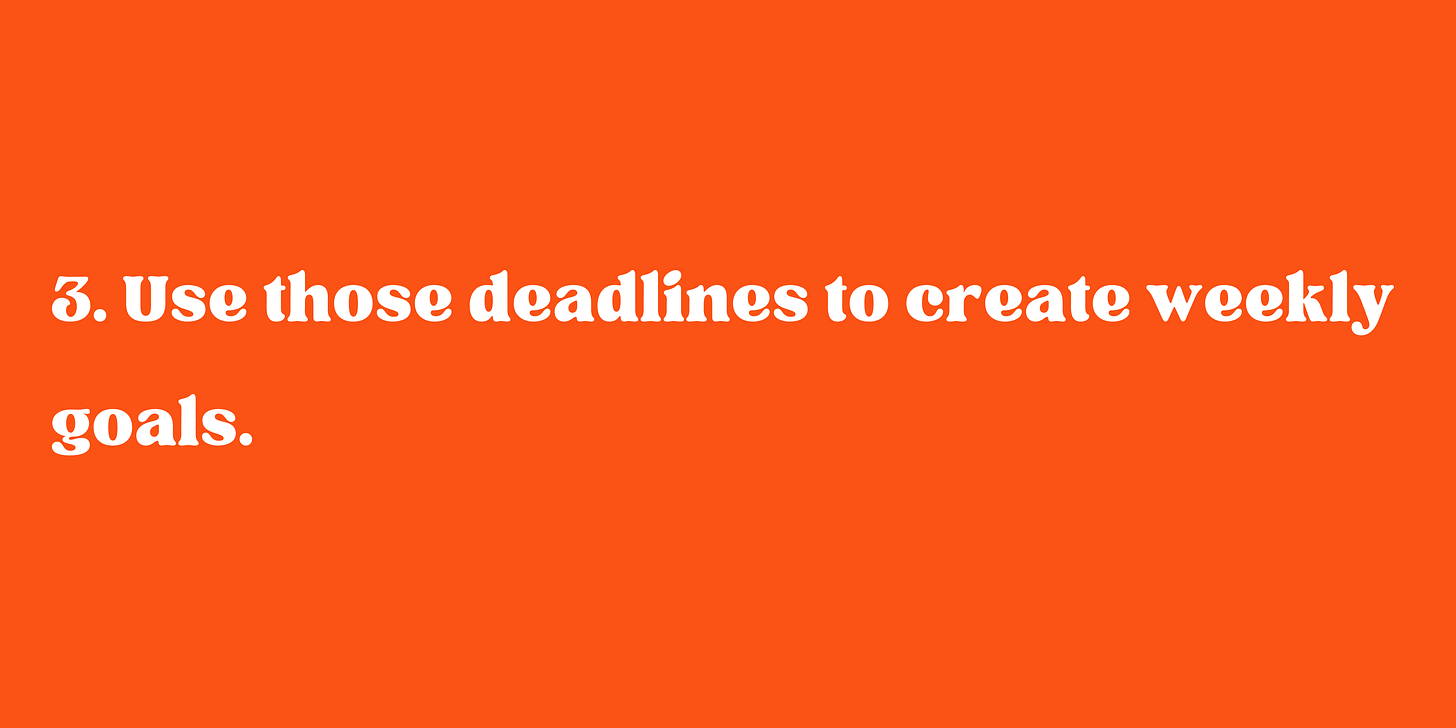

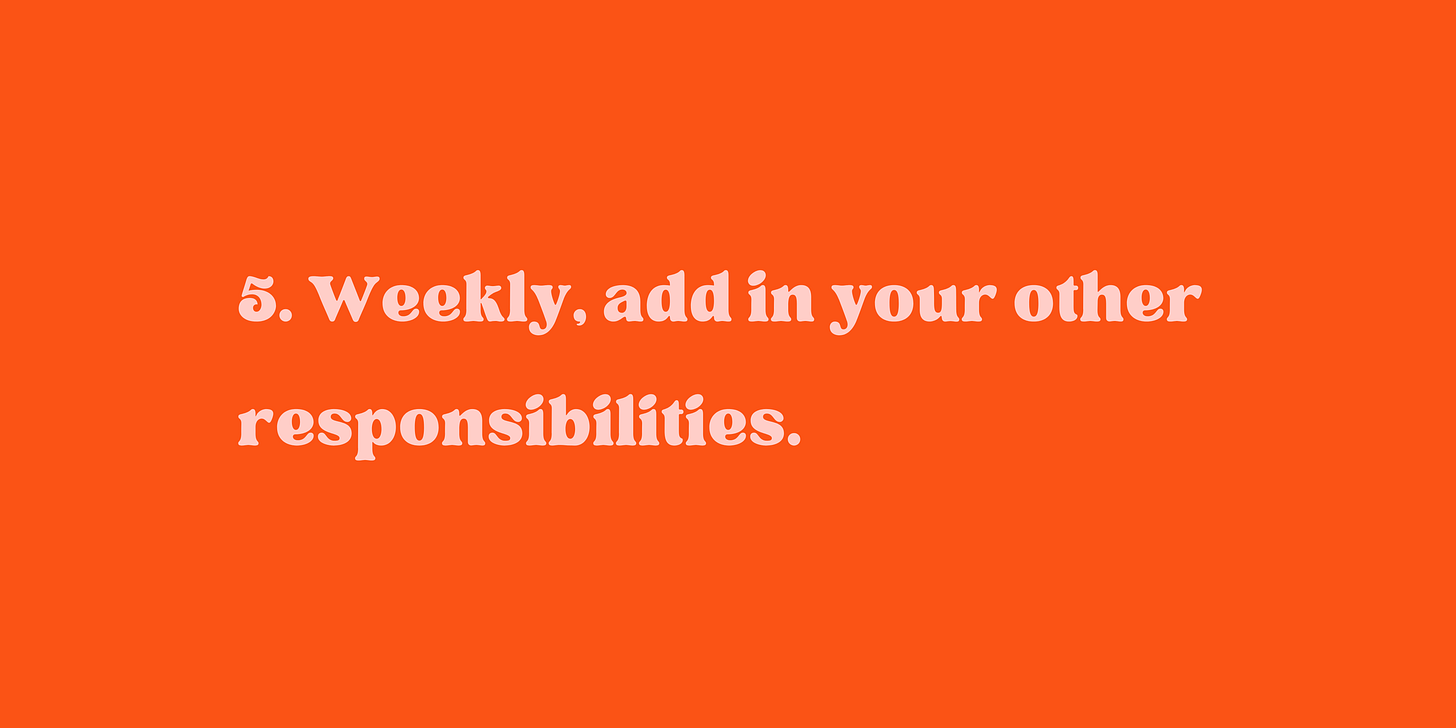
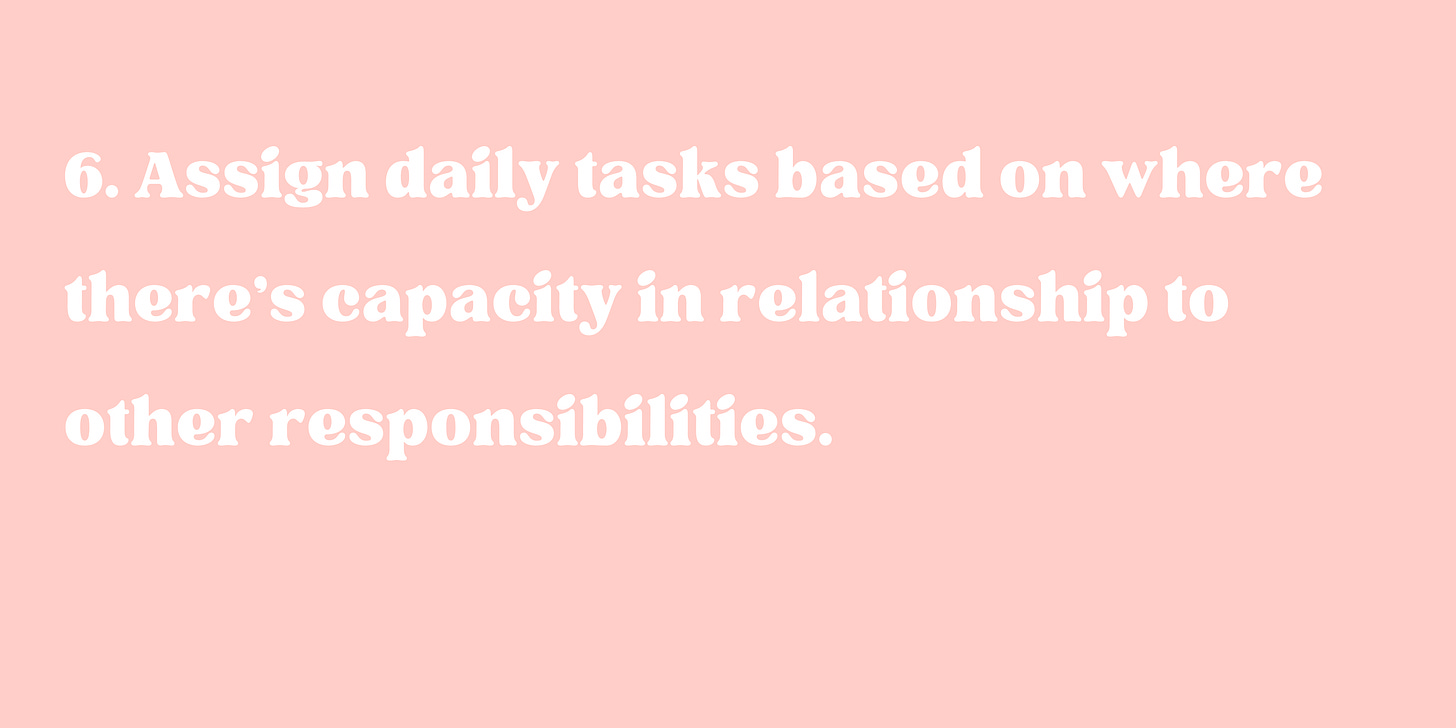
ooo this is good! Thank you for sharing!